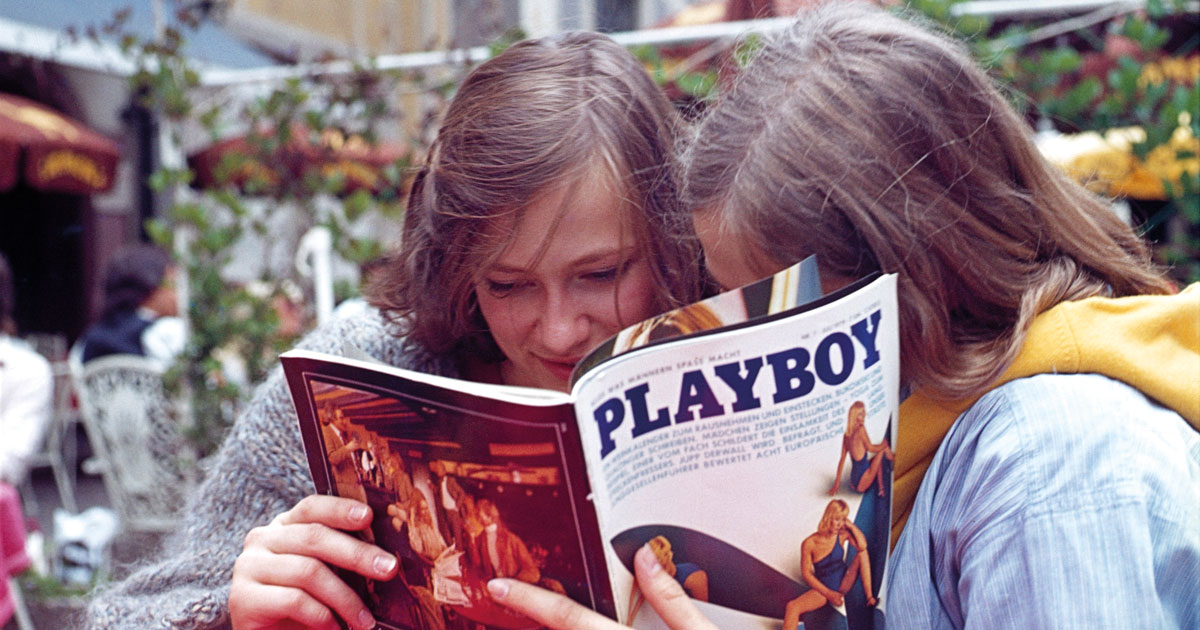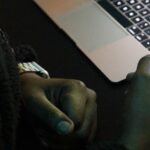
Exposing Playboy
Posted on Mar 30, 2022 by Alex Fice
Playboy Mansion has always been a Pandora’s box of lavish lifestyles and sexual secrets – with parties that put Gatsby’s to shame. But a new docuseries is shedding light on the darker truths behind Hugh Hefner’s home
Words Verity Butler
In 1952, a man quit his job as copywriter for US men’s magazine Esquire. He was fed up, following the denial of a $5 pay rise. Taking matters into his own hands and raising over $8000 – including from both his brother and mother – he went ahead and launched the inaugural issue of Playboy magazine.
The man in question is, of course, Hugh Hefner. Spearheading a sexual and cultural revolution, at the peak of its global success, Playboy sold over seven million copies monthly. Hefner’s endeavours undoubtedly initiated a standardised model of explicit content as we see it today; and he is seen as the pioneer for a movement that contributed to the liberation of women’s sexuality. But it’s always been a very contentious argument, with many over the years left wondering if the lines between freeing women and objectifying them were blurred by the Playboy brand – and Hefner’s notorious lifestyle.
Cult-like regime
The Playboy Mansion could more appropriately be dubbed a metropolis than a home; a whopping 70-room, brick-and-limestone ‘Gothic-Tudor’ residence. Immortalised as some heavenly temple, it was where Hefner lived with his harem of women for over 40 years.
Famed for his lavish parties – with celebrity guest lists and socialites – the mansion was also known for the Playboy Bunnies (women dressed in revealing outfits, with ears and tails), who waited on the partygoers. What truly took place within the confines of the mansion had largely been a mystery; Hefner and his associates keeping a strict hush-hush on events that unfolded.
Since Hefner’s death in 2017, a growing chorus of women have shared their truths about what took place there.
A new docuseries, Secrets of Playboy, seeks to provide those voices with a platform. It sees former Playboy models and Hefner’s ex-girlfriends speak of the bizarre regime within the luxurious house. Describing it as not dissimilar to a cult-like mentality, there is an emphasis on Hefner employing what are known today as ‘love bombing’ tactics, to maintain a structure of power and censorship.
Speaking to co-director and DOP of the new series, Arlene Nelson ASC, it was quickly evident that presenting information of this calibre to the world was no simple feat.
“I was lead cinematographer, as well as co-director, so prior to going out and filming, I was able to do a great deal of research and be part of the story meetings,” she explains. “We all had assignments of what we had to dig deep into. This led to me discovering one subject that the production had been unable to find – Hefner’s personal valet.”
An Insightful source
A key source of information, the valet provided a rare and insightful perspective. He explains how he brought the Playboy founder a sex schedule to the bedroom every day, with details of which women he would be having sex with and what outfits they should be wearing. He additionally claims that Hefner didn’t just participate in all of the sexual activities, but also directed them.
“The chase to find him was very challenging,” continues Nelson. “But I got a little nugget that he was an artist, so we combed the Los Angeles area for someone called Stefan Tenenbaum.
“It took me two months, but when I eventually found him, he started talking. We realised how important a character he was. He was part of the mansion interior life for two and a half years.”
Nelson stresses that not only did Tenenbaum contribute to the narrative of the documentary, but was also integral in validating the women’s stories.
Location, location, location
As with many recent productions, there were Covid-related issues when it came to piecing together the series under its original schedule and locations.
“We were hoping it was going to be a half at home in California job, and half a travel job – with different regions in the US, but also further afield in the UK and Helsinki,” says Nelson. However, this structure was ditched at the last minute, when it became very clear that this degree of travel was not viable.
“I would say that of the 64 interviews, 30% to 40% of them were done remotely with a local DOP. But, I oversaw and had schematics and conversations beforehand, making sure to have a prep day with the AC, DOP and sound person, so we could test the Zoom remote set-up.
“We also did a technique where we had A and B cameras next to each other – so the B camera got the wide shot of the entire world of that subject, but then the A camera was tight and direct.
“We even had an eye director. A little device that’s over the camera and has a series of mirrors – allowing the interviewer to sit in front of the black box and appear on the lens. This, in
turn, allows subjects to look directly into the camera, presenting them in a way that looks as though they are connecting and talking to a human, rather than a camera.”
For a vérité-style series, presenting the storyline and subjects in such a manner allows the documentary to differentiate itself from being a reporter of facts, acting as a vocal chord for those needing to tell their story in a tangible way.
“Primarily, we used the Sony FX9 for interviews,” continues Nelson. “Sigma Art primes were the main interview lenses and Canon FD primes were used for recreations.
“We also chose Sigma Art primes, because those are optics that we were finding we could easily procure anywhere – and this was especially helpful for the remote shoots.”
Behind the camera
In terms of the camera selection, it seems that the choice was not an unusual one for this format of documentary.
“The Sony FX9 is becoming a pretty popular camera,” says Nelson. “What I appreciate about it is that it’s extremely user-friendly. It has a nice aspect that also has dual ISO, which provides more flexibility in low-light situations.
“On top of this, it has a variable ND – and anyone in documentary can tell you that being able to change mid-shot is so key, as it allows you to keep it at a lower T stop for a more shallow depth-of-field.”
It’s clear that the truth behind the Playboy Mansion was waiting to be told. Many of the Bunnies and inhabitants spoke of the way Hefner was always sure to censor and prevent any incriminating stories emerging. Therefore, telling this story in a sophisticated, but tactful way was of utmost importance.
“Of course there has been a backlash to this documentary, with people in shock and disbelief. Many are standing by the fact he was the kindest, gentlest man. I have to say, I’ve met him – and I can agree with them. But I think oftentimes it’s a pillar within society, and we don’t register that a predator walks among us,” reflects Nelson.








